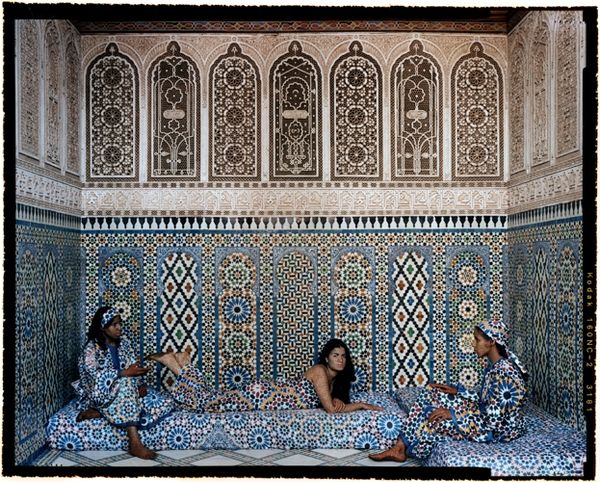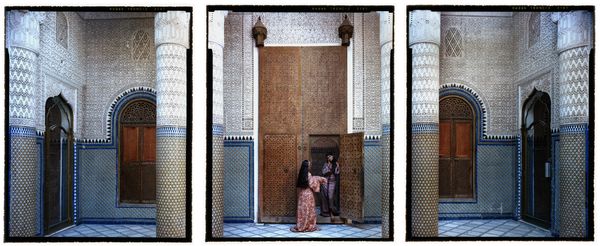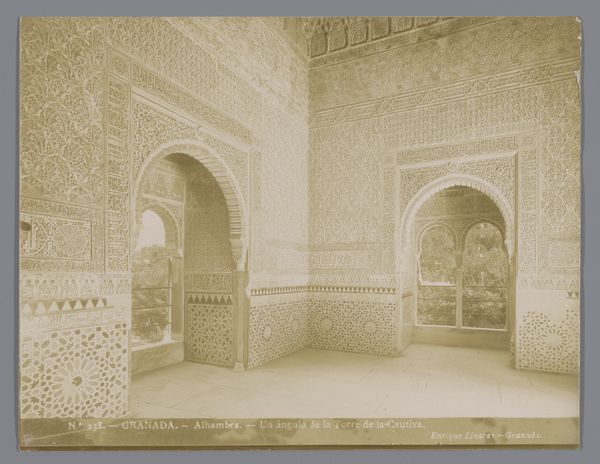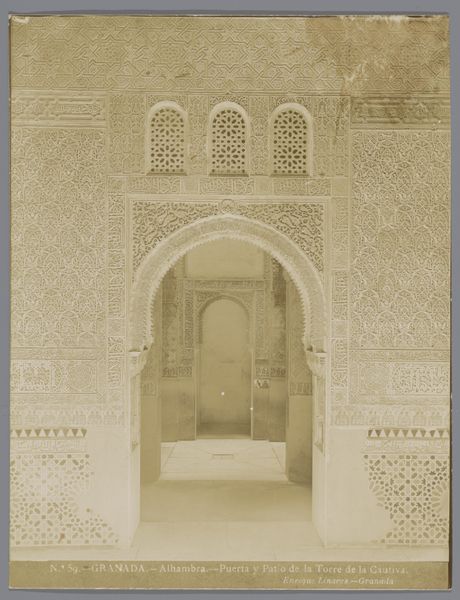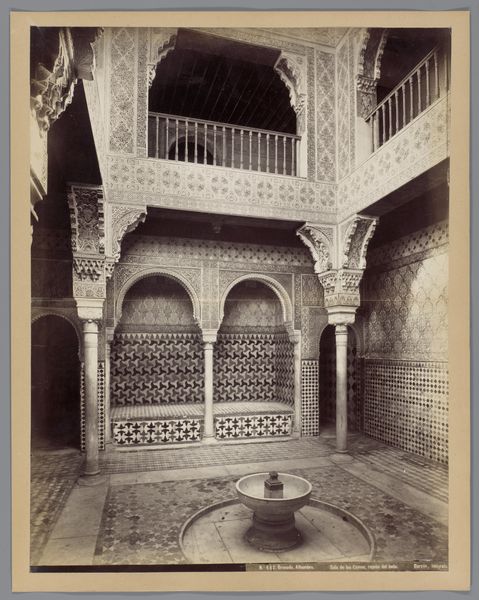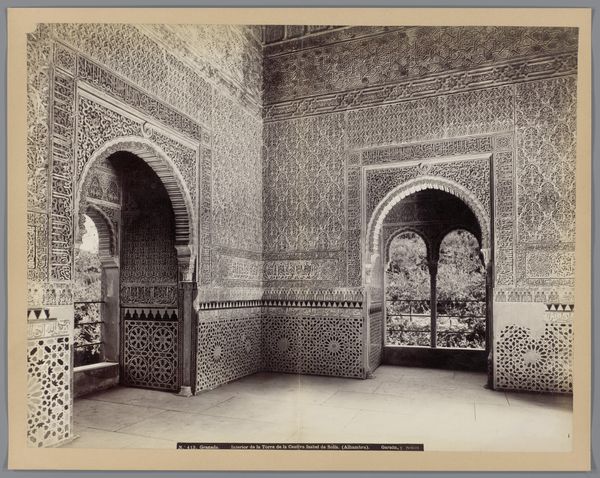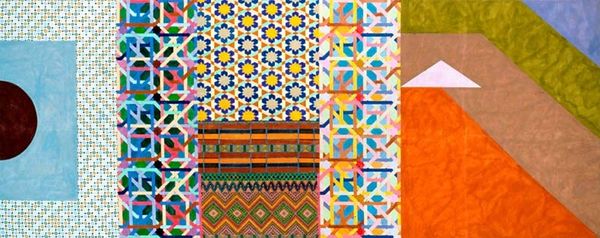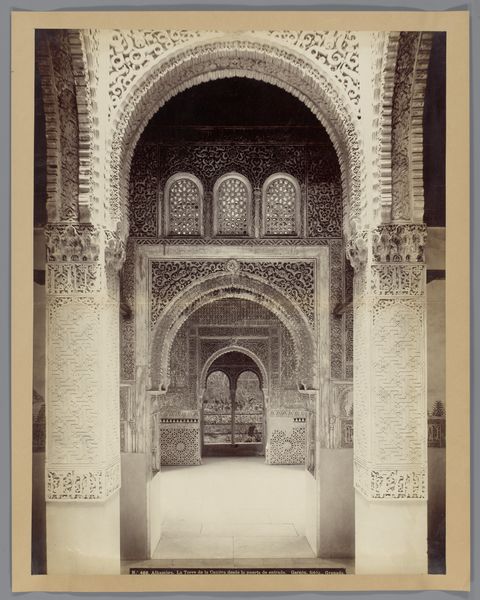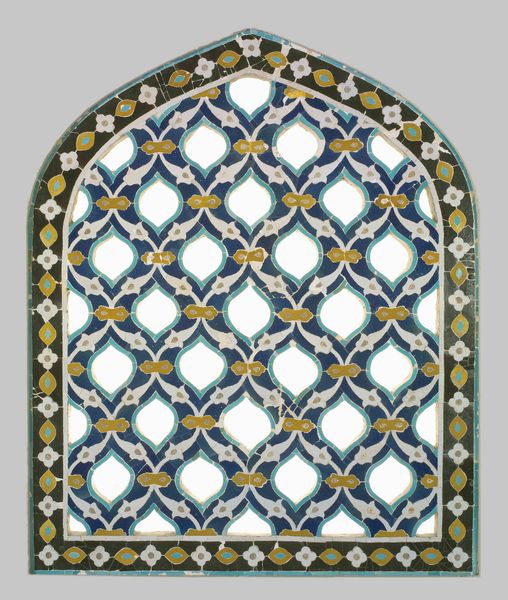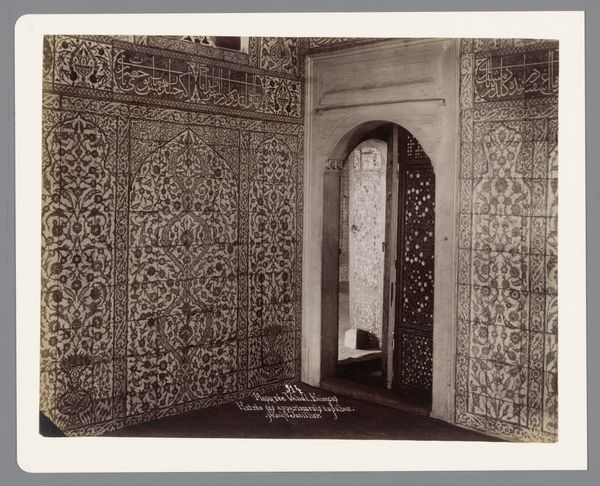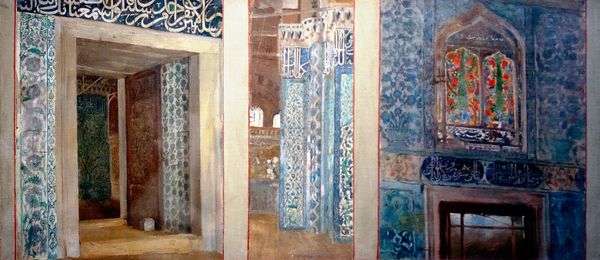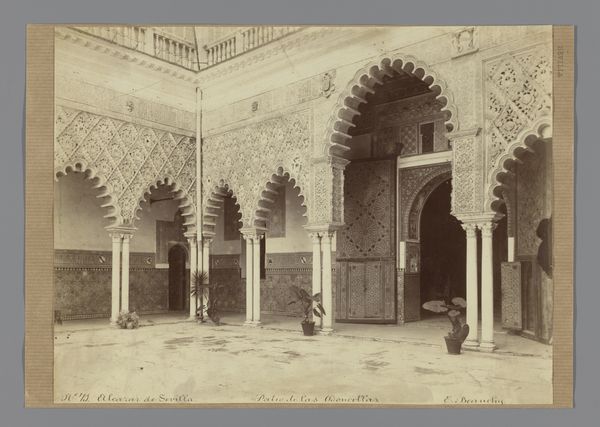
photography, architecture
#
portrait
#
architectural landscape
#
architectural photography
#
historic architecture
#
photography
#
islamic-art
#
architecture photography
#
architecture
Copyright: Lalla Essaydi,Fair Use
Curator: Lalla Essaydi’s "Harem #14c," created in 2009, presents a compelling dialogue on space, identity, and representation through the lens of Islamic art and feminist theory. Editor: My first impression? A kind of melancholic beauty, a convergence of blues and browns. It’s visually sumptuous but carries this quiet weight. The repetition, almost hypnotic. Curator: Exactly. Essaydi, with her background straddling Morocco and the West, directly confronts orientalist stereotypes. By staging these photographs within the architecture of the harem, she reclaims a space historically viewed through a colonial gaze. Editor: Reclaims it... but is it transformed? The woman almost blends with the patterns; it's like she's becoming part of the architecture, both imprisoned and empowered by it. I am curious about how much the site-specific quality is important. Curator: Absolutely. Her choice of location underscores this tension. The opulent, tiled surfaces, traditionally associated with domestic confinement, become a canvas for her subjects' self-expression. It critiques the Western fascination with the "harem" as a site of exoticism and eroticism. This becomes more interesting when connected to contemporary dialogues surrounding cultural appropriation, gender, and the politics of representation. Editor: But look closer – the henna, applied like calligraphy. It is ornament and articulation simultaneously! Is this artist adding another dimension for representation, disrupting the narrative but writing it back. Almost literally inscribed. The viewer has to rethink about pattern as a decoration itself. Curator: Precisely. This adds another layer of meaning. It allows her to articulate her identity and thoughts within a space that has historically silenced women’s voices. Her henna paintings serve as visual disruptions, challenging established power structures. Editor: And what of the gazes? She looks right at the viewer with no submissiveness or defiance: a neutral challenge of both gazes (West and East) Curator: The subjects often meet the viewer’s gaze, challenging orientalist fantasies of submission. She explores these questions of agency and resistance through her photographic interventions, raising fundamental questions about art history and power relations. Editor: Yes, that liminal space—between visibility and invisibility, freedom and confinement—that’s where the art really starts to resonate. Curator: It urges us to reconsider how we view the interplay of tradition and modernity, of art and resistance. Editor: Indeed! It nudges us towards a more nuanced reading, more respectful consideration of history, place and identities.
Comments
No comments
Be the first to comment and join the conversation on the ultimate creative platform.
